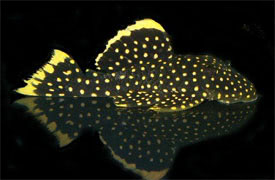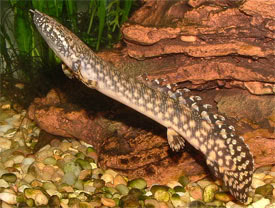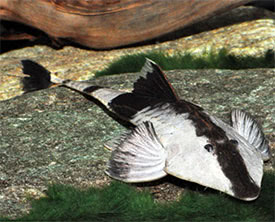
 Magyarul / Hungarian
Magyarul / Hungarian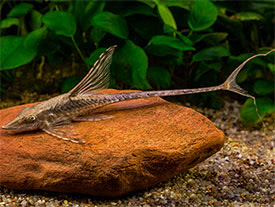

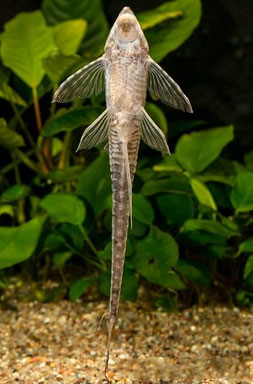
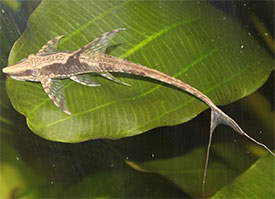

- Scientific name: Sturisoma panamense
- Synonyms: Loricaria panamensis (Eigenmann & Eigenmann, 1889)
- Common name: Royal Twig Catfish
- Group: Catfishes
- Habitat: Central and South America; Panama, Colombia and Equador
- Size: 20 cm
- Biotope: Found in fast-flowing, clear-water rivers.
- Social behavior: A peaceful catfish, that hides among the plants and driftwood during daytime, and becomes more active after dusk.
- Diet: Omnivorous; they eat mostly vegetarian foods such as cucumber, spinach, and algae, but they also eat some live and frozen meaty foods too.
- Breeding: Hard
- Tank: Minimum 130 litres
- Population: 3-4 fish for 250 litres
- Decoration: Furnish a densely planted tank with larger stones and driftwoods.
- Temperature: 26-29 °C
- pH: 6.5-7.2
- Hardness: 5-25 NK°
- Lifespan: 8-12 years
Description: Sturisoma panamense has an elongated, flattened from the top body with a very long caudal peduncle. The base color of the fish is yellowish-brown, with a dark brown stripe extending from the snout to the caudal fin. The belly is silvery-white with some yellow-brown spots. The dorsal fin spine is straight and it is three times longer that the height of the fish. The pectoral fin spine is nearly straight, and about two times longer than the body width. The caudal fin is forked with long filaments. Sturisoma panamense is very similar in appearance to Sturisoma festivum, but they can be distinguished by the fins, which are a little shorter and do not have the trailing extensions of Sturisoma festivum, and Sturisoma panamense has a somewhat slimmer body and its back is not as tall.
Mature males will grow odontodes along the sides of the head and snout. Their breeding is possible, they breed in similar way as other Sturisomas in the genus and will lay eggs usually on a vertical surface, or on the tank walls and the male will guard and fan the eggs. For the first several days the eggs are clear, and then after several days the eggs turn dark as the fry start to develop. The eggs hatch in 6-7 days. At this point the fry are usually 5 mm long. Raise of the fry is hard, because they are lazy feeders, and hardly find the food in the tank. Therefore their aquarium should have a bright lighting (or place the tank in direct sunlight) to encourage algae growth, because this could be a lifesaver for the fry.








